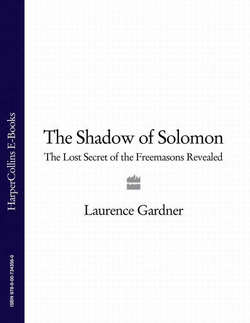Читать книгу The Shadow of Solomon: The Lost Secret of the Freemasons Revealed - Laurence Gardner - Страница 26
Genius of the Few
ОглавлениеThe rebuilding of London continued through 42 years, during the course of which Isaac Newton became President of the Royal Society in 1703. Christopher Wren had been knighted by King Charles II in 1673, and Isaac Newton was knighted by Queen Anne in 1705. It is in English masonic records that, on 18 May 1691, a great meeting of accepted masons took place at St Paul’s to adopt Sir Christopher Wren as a brother. The lodge to which this refers is uncertain, but it is presumed to be the Goose and Gridiron lodge, which actually dates from that year, and later became known as the Lodge of Antiquity. Wren is now listed as having been Master of that lodge, but this is fanciful myth.19 Wren was a staunch Tory supporter, a well-known Jacobite, and already a long-term mason who would certainly not have joined a Whig lodge to become its Master. There never was any such meeting at St Paul’s. In fact, there was no St Paul’s. The old building had been completely demolished; work was not begun on the new cathedral until 1675, and the scaffold and screens were not taken down until the winter of 1708. Meanwhile, no one but the workmen were allowed beyond the screens, and in May 1691 Christopher Wren was busy in Richmond, working at Hampton Court Palace for Queen Mary.20
St Paul’s Cathedral was the last of London’s reconstructions and, with the work finished, the once low-slung, shambling city displayed an elegant skyline of towers, domes, steeples and spires. It should have been the most wonderful culmination, but by that time Wren had few surviving friends or family with whom to share his triumph. Twice a widower and not marrying again, he had also lost his beloved daughter Jane. His dear friend Robert Hooke, with whom he rebuilt the City, had died in 1703, as had Samuel Pepys, while Robert Boyle had died earlier in 1691, and John Evelyn in 1706.
King Charles had been succeeded by his brother James, who was deposed by the Whigs, in favour of William and Mary in 1688, and the Royal House of Stuart—Europe’s longest reigning dynasty—had reached its monarchical end. So too went the heritage of the Rosicrucian Order from Britain, and the philosophical mind-set which had inspired and fuelled the pioneers of the Gresham brotherhood, moved into France and Italy.
It was Christopher Wren’s inaugural Gresham College lecture in 1657 which had cemented the original group into a formal Society. But now his visits to the coffee houses and theatres were over, for the old haunts had gone and the new ones were quite different without his friends. They had become business places for a new breed of financial marketeers. As the resurrected city became operative once again, so the fraternity of Wren’s early years became a figment of history. The days of their pioneering collaboration were done, and irrespective of how the Royal Society might progress in the future, that magical half-century could never be repeated. Nevertheless, as Britain moved towards a new era of Industrial Revolution, everyone knew that none of it would have been possible were it not for the grand legacy of invention, design and discovery, unrivalled in all history, and the incomparable genius of those few.
